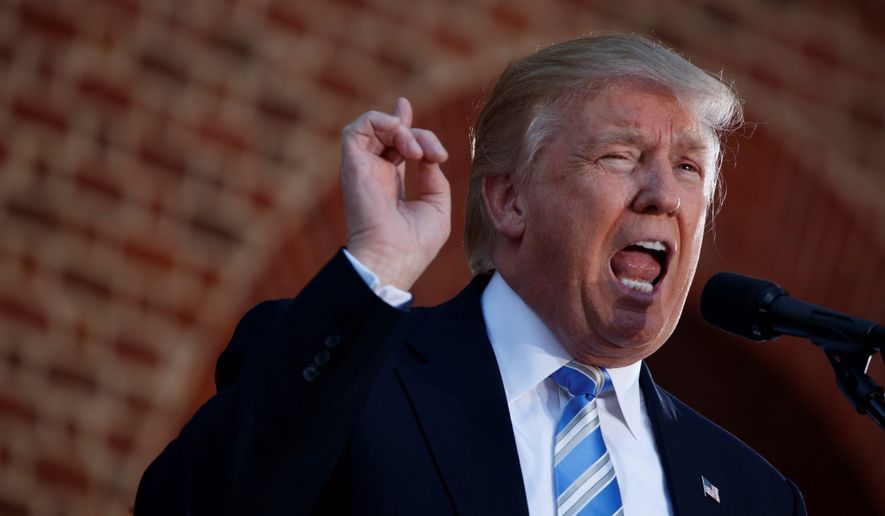Donald Trump is thumbing his nose at the countless polls that show him trailing Hillary Clinton and pundits who say he’s headed for a crushing defeat in two weeks, confident that the political movement that he unleashed will rise up to overwhelm the Clinton political machine Nov. 8.
He has taken inspiration from the Brexit vote in which a populist uprising and low turnout among young voters delivered an upset to the British political establishment with a vote to quit the European Union.
His supporters also are convinced the polls are wrong because pollsters fail to count the new voters and infrequent voters that flock by the thousands to Mr. Trump’s rallies and helped defy naysayers in at the primary to deliver him the GOP nomination.
“Wait ’til you see the results on Nov. 8. People are going to say, ’Wow! That’s really surprising!’” Mr. Trump said Friday in front of thousands of people who filled the Cambria County War Memorial Arena in Johnstown, Pennsylvania, to hear his message.
“There is something going on that’s very special. I mean, look at this place,” said the New York billionaire, later adding that Mrs. Clinton is lucky if 500 people show up at one of her rallies.
However, it remains a tall order — or a pipe dream if you believe the critics — to transform the raw enthusiasm of rally crowds into votes cast on Election Day. That’s the function of get-out-the-vote operations, such as the one built by Mrs. Clinton, her party and their labor-union allies.
SEE ALSO: Donald Trump, shifting demographics put Arizona, Georgia, even Texas in play for Democrats
Mr. Trump has never dominated the ground game. The Republican National Committee stepped in with the GOTV operation it has been working on since Mitt Romney’s defeat in 2012, essentially putting it to the test for the Trump campaign.
The Trump campaign also has been building a voter file from the ticket requests for rallies. But the thousands of people seeking tickets and attending Mr. Trump’s events are only a fraction of the millions of voters in each battleground state.
Vanderbilt University political science professor Marc J. Hetherington, an expert on polling and voter behavior, said a Brexit-style surprise for Mr. Trump was “possible but in the end hard to imagine.”
“Here’s where it’s unlikely,” he said. “What turns unlikely voters into voters? Usually that’s a campaign apparatus. That’s going door to door, getting people to the polls. It’s making sure they are registered.”
“At least in terms of turning support into votes. What campaigns are about is turning latent support into votes on Election Day. And that’s where the formal apparatus — the machine — helps,” said the professor.
Voting in the U.S. is not necessarily easy, especially if someone hasn’t participated in the past. You have to get registered to vote, find the correct polling location and get there on Election Day or during the early-voting period in states with early voting.
SEE ALSO: TPP by another name? Tim Kaine, Hillary Clinton open to Asian trade deal
“It can be a pretty daunting thing,” said Mr. Hetherington. “That’s where, at least in the last two election cycles, Democrats have just done much better than Republicans at this kind of thing.”
Mrs. Clinton and the Democratic Party have labored to recreate the operation that put Barack Obama in the White House twice, with aggressive voter outreach and registration drives targeting women, minorities and young voters that formed the Obama coalition.
“This isn’t Obama, it’s Clinton. That’s a key point,” said Bruce Levell, executive director of the National Diversity Coalition for Trump. “There’s not Pied Piper-ish enthusiasm as it relates to what Obama had in ’08 and ’12.”
He insisted Mr. Trump’s support was undercounted and underestimated.
“At the end of the day this is a campaign that is unlike any campaign in the history of the United States,” said Mr. Levell. “You can’t gauge this campaign based on a traditional playbook. Most people in the game are trying to put this square peg in this round hole. You can’t look at it like that.”
• S.A. Miller can be reached at smiller@washingtontimes.com.




Please read our comment policy before commenting.